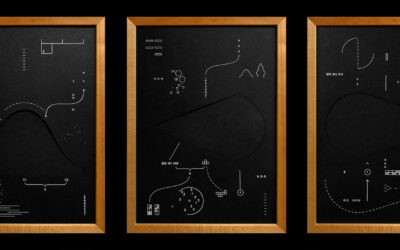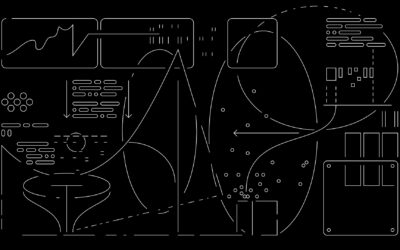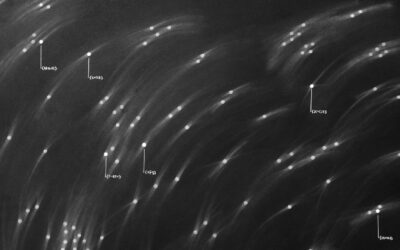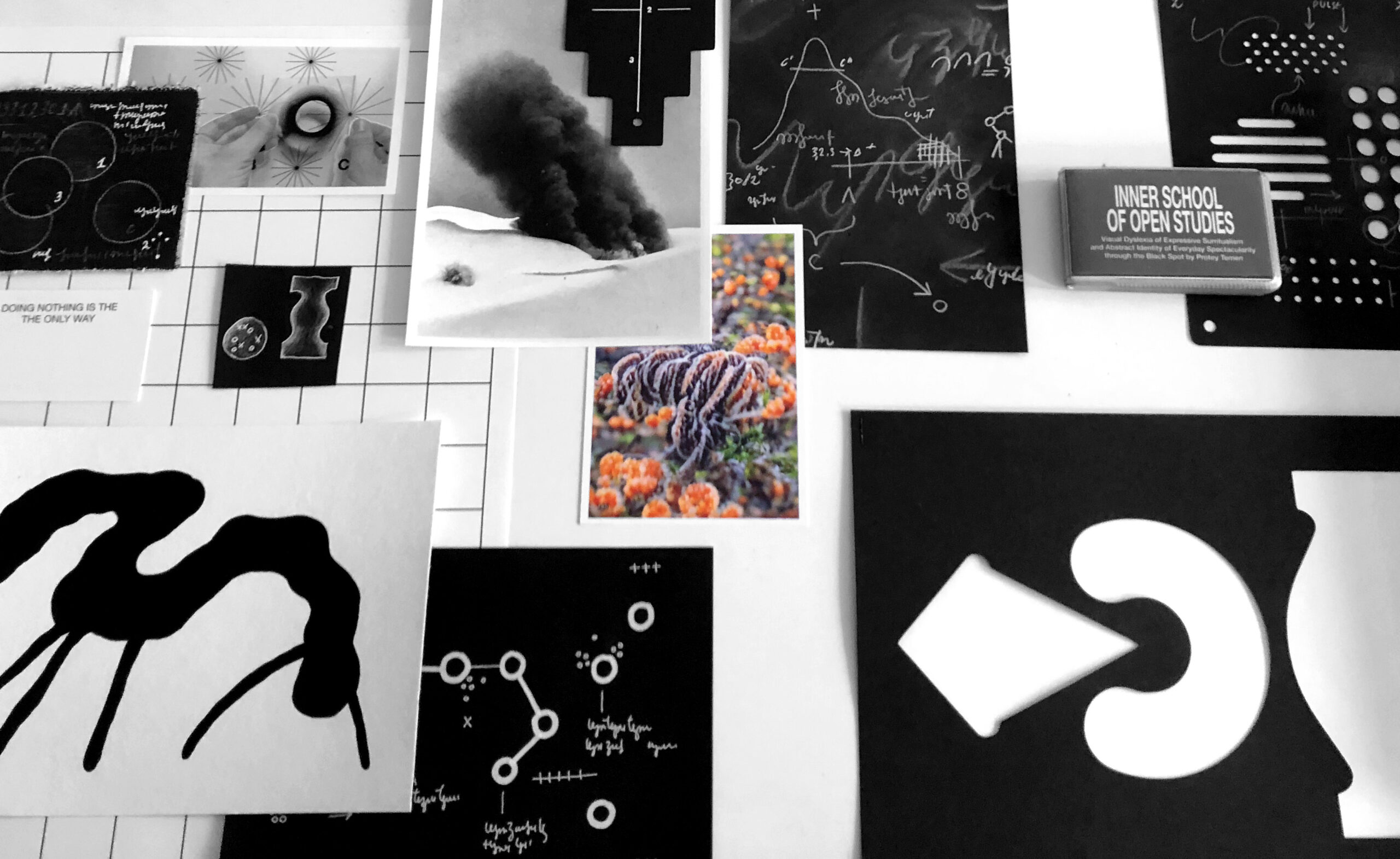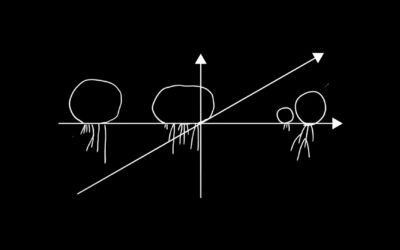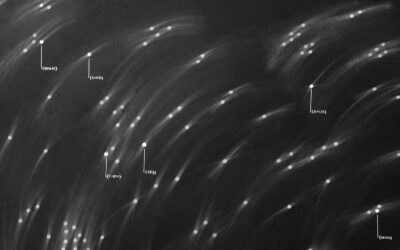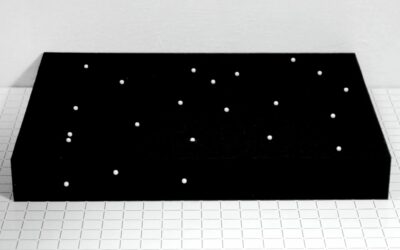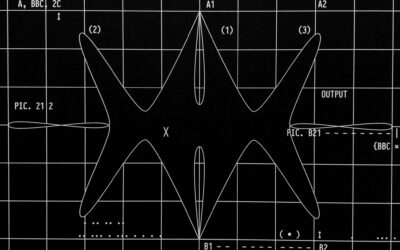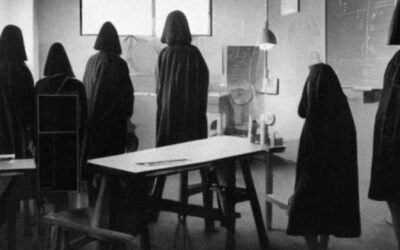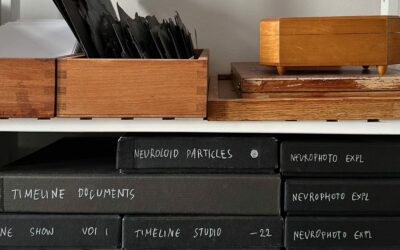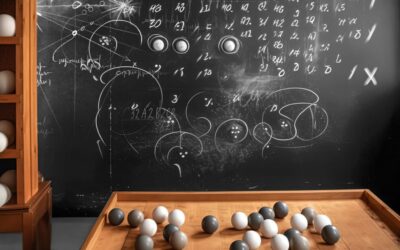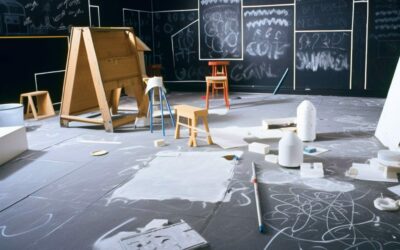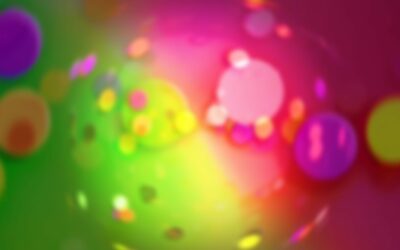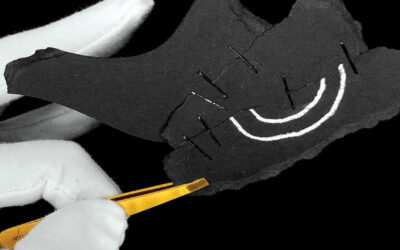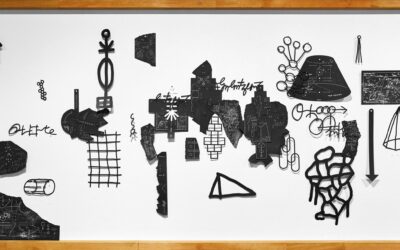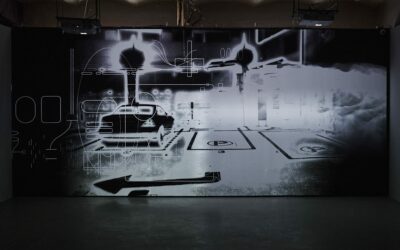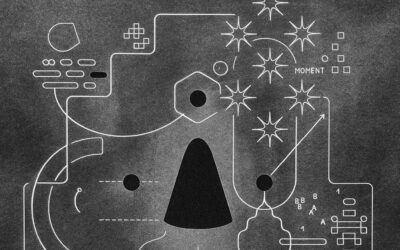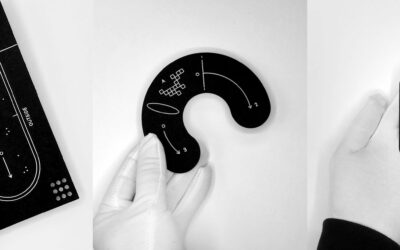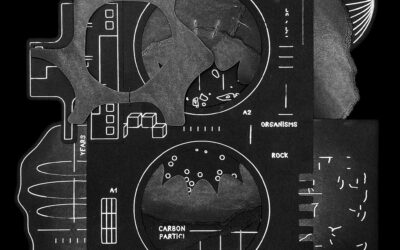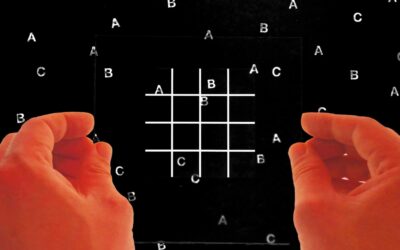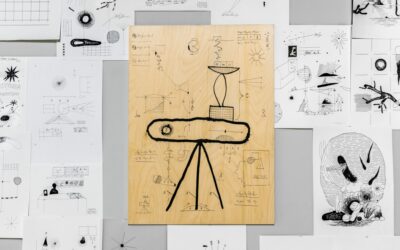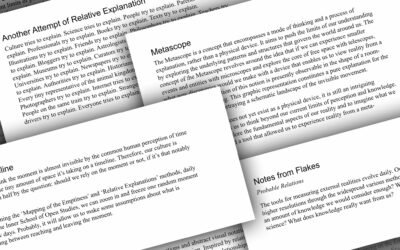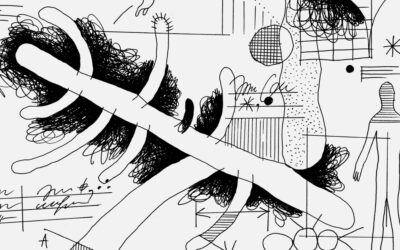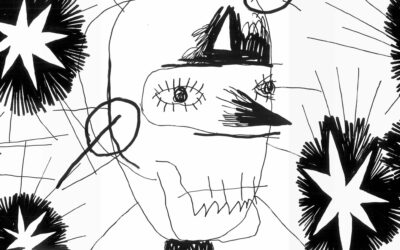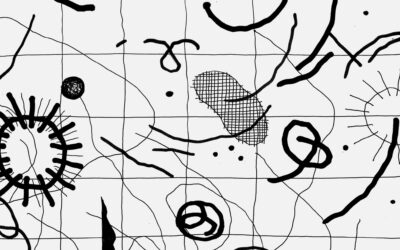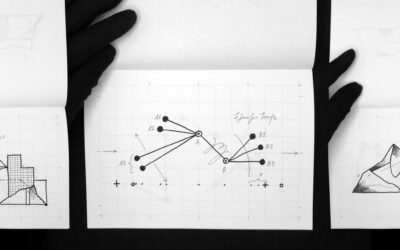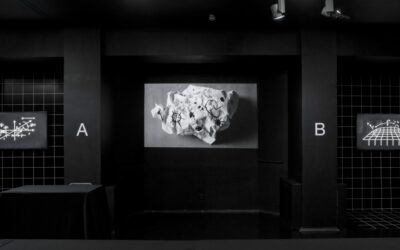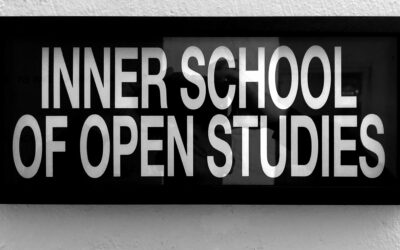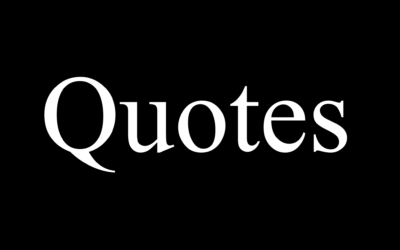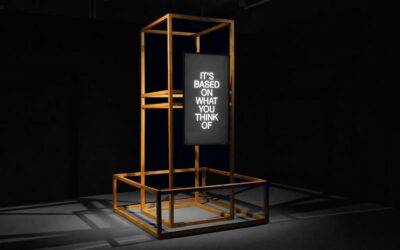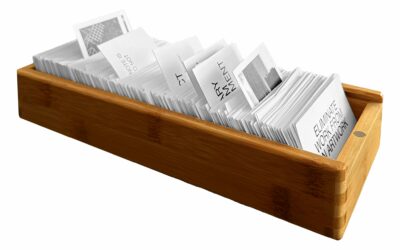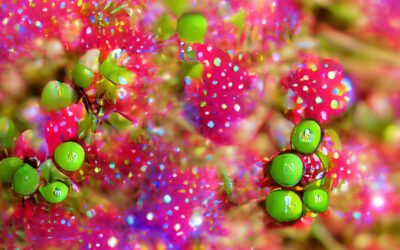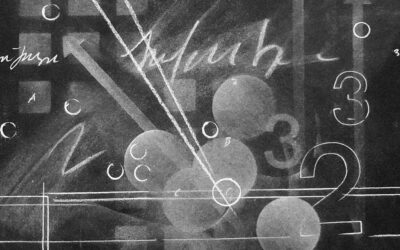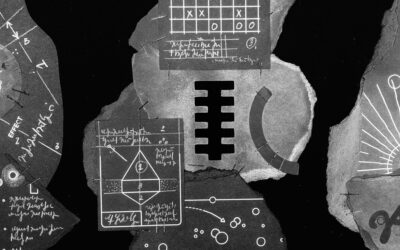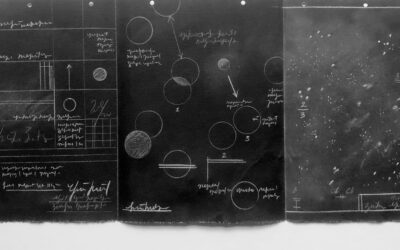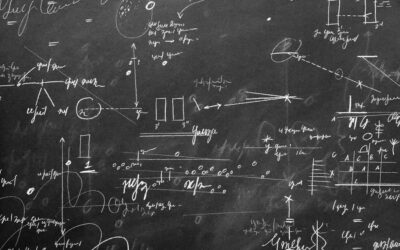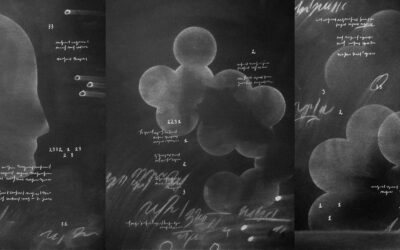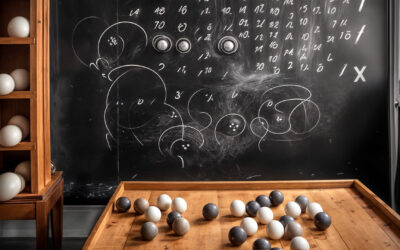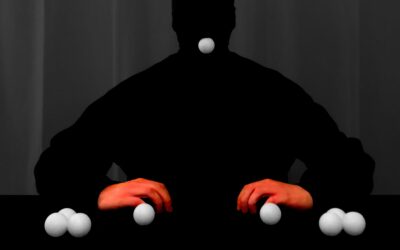ATLAS: Schemes
Layers of black matte cardboard, white gel ink, mechanical cut, mechanical drawing. 29,7 × 21 cm. 2018—Ongoing
Grasshopper OS
100 Video fragments, shuffle playback, sound, 1920×1080. 2020—2021
Total Timeline Drawings
“Relative Explanations” cycle. “Total Timeline” series. 12 pieces. Black paperboard, white chalk, white gel ink, 50 × 70 cm. 2018.
Inner School of Open Studies
Inner School of Open Studies is a non-linear and hermetic art project committed to merging synthetic approaches in knowledge processing: language, calculation, and drawing. Collectively, these methods help us think, dream, and communicate across the dimensions of time...
Video Explanations
120 video fragments, shuffled playback, 1920 × 1080, sound. 2018
Total Timeline
Multidisciplinary project. 2017—On-going
Particle Studies
Multidisciplinary on-going project. 2016—On-going
Calculation (Preview)
The series draws inspiration from the relationship between humans and computing machines. Hardware components, motherboard designs, interfaces, and unrevealed future tech ideas take form of screenshots, patents papers, and prototypes.
Ocean of Memory: Shuffle Preview
Autoplay module
Newspaper
A set of 360 cards, 300 gsm², 21×15 cm. 2022
Kabinet Playground
Fragments of workflow, cabinet parts, and archive details.
Particle Studies and Explanations
A set of digital sketches. 2023—Ongoing.
Wall Drawings
A set of digital sketches. 2023—Ongoing.
Queens and Princes
A video-based fairytale. In February 2020 I wrote this fairytale as a reaction to whatever was happening out there. Later, during the springtime lockdown, I came up with an idea of a migrating audio-visual show. You know, we all remember those days, when all the activities happened to be only online. The main idea was to show this tale only for 24 hours on cultural institutions Instagram accounts. My friend and musician Dima Ustinov created a special soundtrack for each of the 22 pieces of the tale.
From Cave to Starship
…The past is changing more often than the way we perceive it. The illusion that our world is static supported in the XX century by museums and historians who dig through the ashes of civilisations can no longer stand up to the challenges of today.
Contours
“Visual Dyslexia” and “Flakes” cycles. 2020—Ongoing. Black paperboard, white chalk, white pencil, pins. The site-specific arrangement.
Ocean of Memory: Stream
300 video fragments and 300 lines of a poem in the form of a shuffled song combined in a mixture of endless loops. Multi-channel video, multi-channel sound. A first public demonstration in 2021.
ATLAS 21.22.23
“ATLAS 21.22.23” cycle, 120 sheets. Layers of black matte cardboard, chalk, white gel ink, mechanical cut, mechanical drawing, floating support, 29,7×40cm. 2022—On Going.
Cards, Fragments, Components
Layers of black matte cardboard, white gel ink, mechanical cut, mechanical drawing, eyelets. Various sizes. 2018—Ongoing
Document Arrangements
Layers of black matte cardboard, chalk, white gel ink, mechanical cut, mechanical drawing, black staples. 2021—2022. Published by Anthropogenic Markers: Stratigraphy and Context, by Max Planck Institute and Haus der Kulturen der Welt
Uncertain Praxis
Ping-pong balls, large and small resin particles, brass rods 10cm, metal wire, lens, paper masks, Laserjet print on transparent film. 2018.
Drawing (Preview)
The process of thinking can begin with a pencil. Whether you’re attempting topic-specific mark-making or pure beauty, you can document the experience of life, catch a glimpse of a thought, or capture emotion. Intimate, expressive, naive, or raw, the drawing is the framework of the picture.
Descriptions
Selection of introduction texts, quotes, and comments for exhibitions and other events. Shuffled order. Does not necessarily fit into the seamless narration.
ATLAS
“Visual Dyslexia” cycle. “ATLAS” series, 2015—2017. Paper, acrylic ink, gel ink, various size. Produced as a book: Atlas. Parts 1—3 2015—2017, 21×29,7cm
Alchemy, Pilots, Anthills
“Visual Dyslexia” cycle. “Alchemy, Pilots, Anthills” series, 2015—2016. White offset paper 120gms², acrylic ink, gel ink, a set of an unknown quantity, unique drawings, 21×29,7cm and 42×29,7cm
Spirals, Grids, Scales
“Visual Dyslexia” cycle. “Spirals, Grids, Scales” series, 2015—2018. White offset paper 120gms², acrylic ink, gel ink, a set of an unknown quantity, unique drawings over LaserJet print, 21×29,7cm
Notebooks of Relations
“Visual Dyslexia” cycle. “Notebooks of Relations” series, 6 (9) topics, 2018—2020. White offset paper 80gms², acrylic ink, gel ink, LaserJet print, a set of 240 unique drawings, bound in 4 books, 15×21cm
Exhibitions
Exhibitions, events, and installations. Views of the rooms and close-up fragments. Various cities, places, and years. Through their mosaic, a seamless narration erupts. Photographs are displayed in a shuffled order.
About Inner School
Inner School of Open Studies is a non-linear, hermetic art project. Dedicated to a combination of synthetic methods for preserving and developing knowledge: language, calculations, and drawing. These methods work together to allow people to understand, communicate, and preserve their findings and theories to others in a precise and accurate manner.
Quotes
Selected excerpts of introductions, curatorial explications, and commentary for exhibitions and projects.
by Kurt Bille
The fundamental layer of our co-existence is the object of interest investigated by mixed media artist Protey Temen. A layer that is constructed by our ability to gain and accumulate knowledge that, in turn, structures our experience of the world around us…
by Yulia Yousma
The graphics, objects, videos, and multimedia installation in the exhibition are part of a larger project, The Inner School of Open Research, within which the artist explores the subtle connections and intersections between science, the contingency of the moment, and the poetry of everyday life…
Ocean of Memory: Stella
One day the boundary of the corporeal will end and everything will disintegrate into pure energy. Only one single ocean will remain of the Earth, shimmering with waves of former flesh. Only a few birds will survive, freed from the carcasses of their cells, but not the memory cells of human language. They will fly endlessly over the surface of the ocean to find, unsuccessfully, an island on which they can rest…
The List of Studies
An ever-expanding and of various cards: sidenotes, footnotes, event titles, project ideas, methods, and so on. Printed on offset paper, 8.5×5.5cm. 2018—Ongoing
by Chiara Spagnol
In the poetics of an artist, the analysis of reality often has to do with the problematization of what is given. This is clearly demonstrated by the Conceptual experience, which in the Sixties imposed a new and radical conception of art starting from the reinterpretation of its foundation: the relationship between image and idea…
Neuroscope
Set of 300 unique images made with text-to-image generation algorithm. The printed edition: 300 gsm², 10×15 cm. 2021—2022.
Explanations (Preview)
A selection of fragments and works from the Relative Explanations series. The main theme of the series is multi-layered abstract arrangements of schematic drawings, formulas, letters, and numbers. The visual poetry of information clouds unfolds from small drawings to spaces.
≣ Textual
The section is devoted to a selection of texts, notes, and individual schemes that support and extend the subject of Inner School interest. This is done using a block of several commonly available methods, such as automatic writing, schematic representation of information, and pulling out of context.
◉ Virtual
The section is devoted to a growing archive of digital-first materials combining drawing practices and assumptions of materiality. In each of the individual sets, emphasis is placed on the blending of formal and descriptive parts of the project. From peering at surfaces to penetrating clouds of particles, from observing free waves to pictorial commentary on quasi-real events and objects.
ǯ Calculation
After the algorithms pass their Machine Learning classes, they will probably be able to think. But what will be the main object of their search? Will they want to help us become more intimate with each other? Will they help unselfishly train us to make the right decisions? If our current questions are usually caused by a lack of data and our strategy of exposure to cognitive errors, will the machine be able to rid us of them? And even if it can, how much more will you be willing to trust it than yourself?
Flakes
“Relative Explanations” cycle. “Flakes” series, 2019—Ongoing. Black paperboard, white chalk, white pencil, white gel ink, black and white staples, hand-torn and machine-cut arrangements. Various sizes.
Canvas Documents
“Relative Explanations” cycle. “Canvas Documents” series, 2022—Ongoing. Black primed canvas, white chalk, white ink, white pencil, staples, various sizes
Boards
“Relative Explanations” cycle. “Boards” series. 60 pieces. Black paperboard, white chalk, white pencil, 50 × 70 cm. 2019—Ongoing.
Pages
“Relative Explanations” cycle. “Pages” series. Black paperboard, white chalk, white pencil, 29,7 × 40 cm. 2022—Ongoing.
✣ Drawing
By copying the observed and building the mirror of our own perception we learn to see certain parts of the world through a drawing. It takes a while to put into practice. We want it to look natural, but usually, all we get is some pale copy. You were planning to depict some particular thing, but your hand happened to slip and you got an absolutely different result. But this different thing, does it mean that you made a mistake or that you saw something they had asked you to ignore? Does a misreading mean wrong perception? Why are we made to read only those letters which are visible? Is it forbidden to read between the lines, to read what is left behind the brackets?
⊞ Spatial
Spatial Concepts...The space consists of various storage systems like shelves, racks, and tables. Within it, there are black and white photographs of poor quality showcasing discoveries and experiments. Unclear purpose instruments such as archaeological rulers are...
About Protey Temen
Protey Temen’s practice is centered around using drawings, videos, books, and installations to create abstract visuals that explore and visualize the intersections between science and visual data. By utilizing the poetry of everyday life processes, he can create a deeper understanding and connection to the world around us.
↹ Explanation
Imagine yourself coming into the classroom 90 minutes late for a lecture. The professor is absorbed in explanation. Nobody’s talking – it’s very difficult to manage to take notes, let alone analyse them. We’re following an invisible hand and pretend to have been there all the time. Tomorrow we are supposed to retell the lecture. How can we retell things we didn’t even manage to understand? The notes are useless. But my interpretation is the fruit of my perception. Do I deserve to have an opinion after all? But the retelling is intended for the asker and his opinion can be different. How should I retell what I understood without being mistaken? Or maybe I have the right to make a mistake?
☉ Material
Okay, okay, we’ve got it all. Let’s figure out how to put this together into some kind of system. After all, surely there must be some general rules. Something that makes sense as part of a whole system. I think I’ve figured out where the correlation is. It may not be as obvious to you yet, but I’ll try to explain. No, no. Not that, on the other hand. Wait a minute. I’m pointing at the other side, where you’re all looking. Of course, it’s close to one another in form, and yes, you’re right, it’s not at all clear what exactly the objects are depicted. There is no mistake-the very objects that are supposed to be shown. Exactly them. Yes, exactly in that order.
